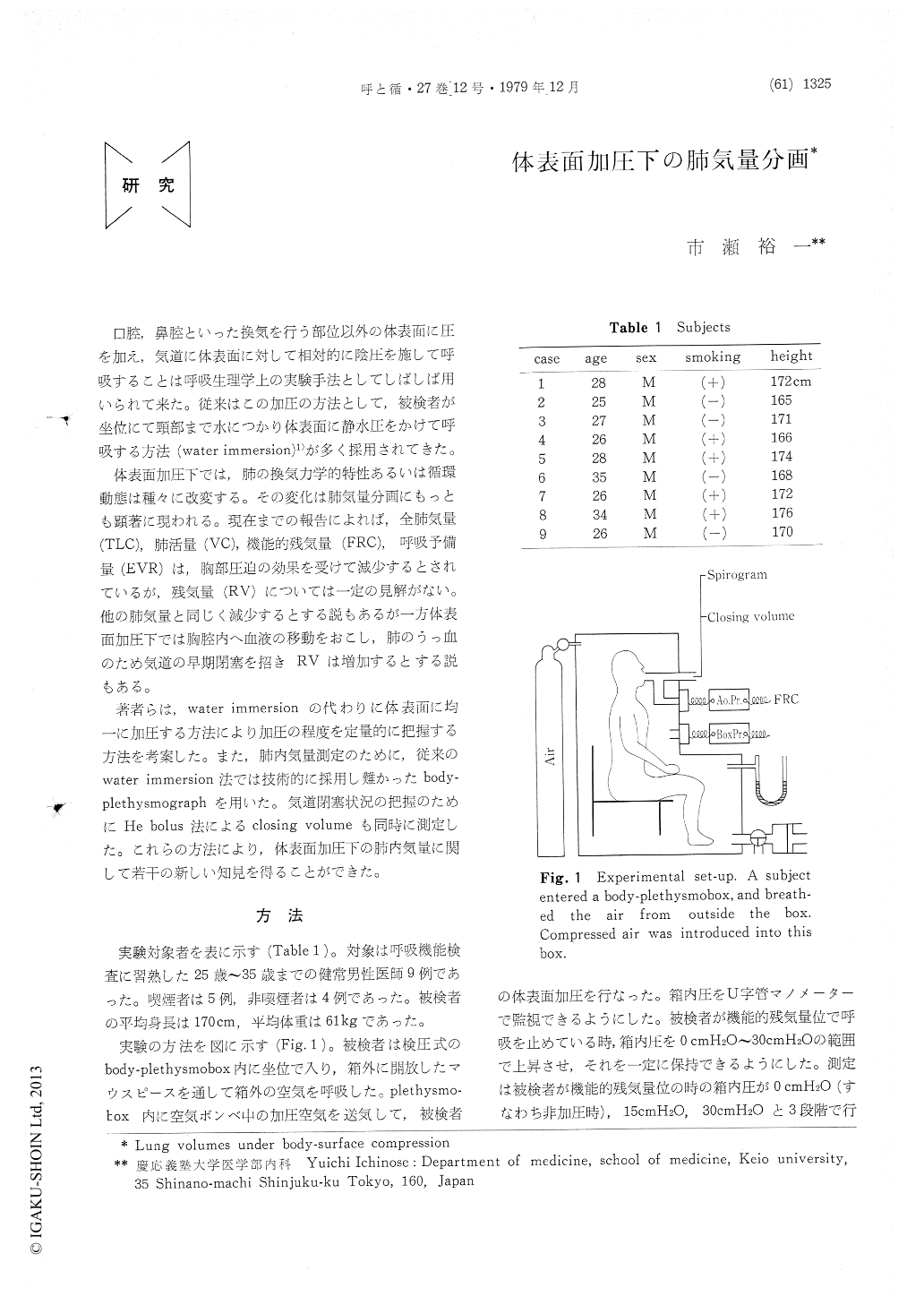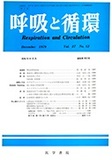Japanese
English
- 有料閲覧
- Abstract 文献概要
- 1ページ目 Look Inside
口腔,鼻腔といった換気を行う部位以外の体表面に圧を加え,気道に体表面に対して相対的に陰圧を施して呼吸することは呼吸生理学上の実験手法としてしばしば用いられて来た。従来はこの加圧の方法として,被検者が坐位にて頸部まで水につかり体表面に静水圧をかけて呼吸する方法(water immersion)1)が多く採用されてきた。
体表面加圧下では,肺の換気力学的特性あるいは循環動態は種々に改変する。その変化は肺気量分画にもっとも顕著に現われる。現在までの報告によれば,全肺気量(TLC),肺活量(VC),機能的残気量(FRC),呼吸予備量(EVR)は,胸部圧迫の効果を受けて減少するとされているが,残気量(RV)については一定の見解がない。他の肺気量と同じく減少するとする説もあるが一方体表面加圧下では胸腔内へ血液の移動をおこし,肺のうっ血のため気道の早期閉塞を招きRVは増加するとする説もある。
Lung volumes and closing volumes were measured under body-surface compression with particular attention to the airway closure.
A new method was adopted to induce the compression. A subject entered a pressure type body-plethysmobox in a sitting position, and breathed the air from outside the box through his mouth-piece. At functional residual capacity, the body-surface was under constant pressure by introducing compressed air into this box.

Copyright © 1979, Igaku-Shoin Ltd. All rights reserved.


